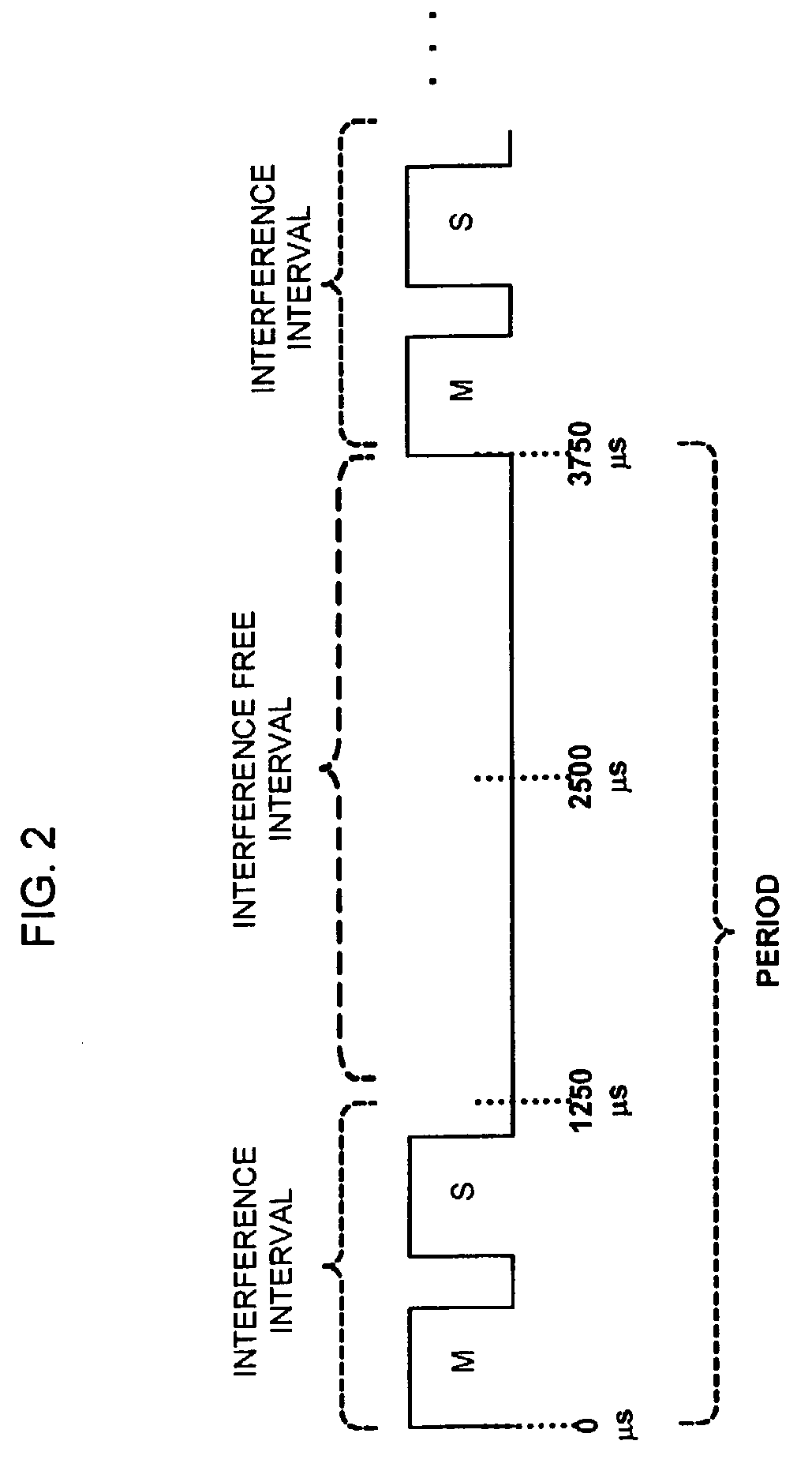Systems and methods for interference mitigation with respect to periodic interferers in short-range wireless applications
a technology of interference mitigation and periodic interference, applied in the field of short-range wireless communication applications, can solve the problems of affecting the operation of wlan devices, wlan devices may suffer complete signal loss, non-wlan devices may suffer similar problems, etc., and achieve the effect of improving the quality of service of communication links
- Summary
- Abstract
- Description
- Claims
- Application Information
AI Technical Summary
Benefits of technology
Problems solved by technology
Method used
Image
Examples
Embodiment Construction
[0016]FIG. 1 shows an example of a short-range wireless network environment having a fixed terminal and a plurality of remote terminals. An example of such a network is an IEEE 802.11x wireless local area network (WLAN) 10 comprising an access point (AP) 20 and several associated stations (STAs) 30, identified as STA1 through STAN. If the WLAN is operating in an environment where other non-WLAN devices are operating, then those devices may interfere with operation of the WLAN. An example of a potentially interfering device that transmits on a periodic or quasi-periodic basis is a Bluetooth™ device (e.g., a Bluetooth™ headset), a cordless telephone device, radar, microwave oven, etc. The WLAN and the other devices may be operating in an unlicensed frequency band, such as the 2.4 GHz band or one of the 5 GHz bands in the U.S. In FIG. 1, interfering devices are shown at reference numerals 40 and 50, respectively.
[0017]The exemplary interfering devices transmit periodically or quasi-per...
PUM
 Login to View More
Login to View More Abstract
Description
Claims
Application Information
 Login to View More
Login to View More - R&D
- Intellectual Property
- Life Sciences
- Materials
- Tech Scout
- Unparalleled Data Quality
- Higher Quality Content
- 60% Fewer Hallucinations
Browse by: Latest US Patents, China's latest patents, Technical Efficacy Thesaurus, Application Domain, Technology Topic, Popular Technical Reports.
© 2025 PatSnap. All rights reserved.Legal|Privacy policy|Modern Slavery Act Transparency Statement|Sitemap|About US| Contact US: help@patsnap.com



